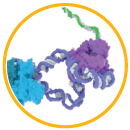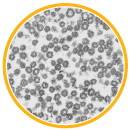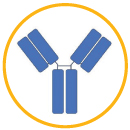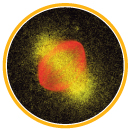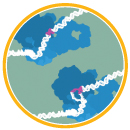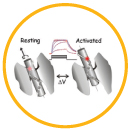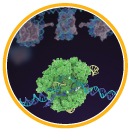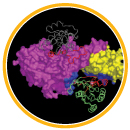
|
Carol Greider and Elizabeth Blackburn awarded the 2009 Nobel Prize in Physiology or Medicine for the discovery of telomerase at Cal. Kathy Collins and Eva Nogales recently determined human telomerase structure, which may facilitate drug design, given this enzyme’s role in cancer and aging. |
 |
Randy Schekman and colleagues use genetics and biochemistry in yeast to define the proteins involved in vesicle-mediated secretion and other membrane trafficking processes. Schekman wins the 2013 Nobel Prize in Physiology or Medicine. |
|
In the 1990s, Jim Allison discovered a monoclonal antibody to a cell surface receptor on T cells that takes the brakes off the immune response to certain tumors, making possible human cancer immunotherapy. Allison wins the 2018 Nobel Prize in Physiology or Medicine. |
Rebecca Heald and Karsten Weis visualize the Ran-GTP gradient and demonstrate its regulation of mitotic spindle assembly and nucleocytoplasmic transport. Georjana Barnes discovers the Dam1 kinetochore complex that mediates chromosome segregation and, with Eva Nogales, determines its unusual ring architecture. |
|
|
Robert Tjian and coworkers isolate and characterize the first eukaryotic site-specific transcription factor and the TATA-box recognition factor TFIID, and with Xavier Darzacq and Eva Nogales obtain dynamic images of transcription in living cells at single-molecule resolution, and high-resolution transcription initiation complex structures, respectively. |
Ehud Isacoff discovers the mechanisms for pore gating and voltage sensing by potassium ion channels, which underlie the firing of action potentials in neurons. |
|
|
In 2012, Jennifer Doudna, with Emmanuelle Charpentier and Martin Jinek, demonstrate that CRISPR-Cas9 endonuclease programmed by a single guide RNA cuts DNA precisely at any chosen position, providing for simple and inexpensive genome editing in virtually any cell type. Image: Janet Iwasa for the Innovative Genomics Institute |
Groundbreaking discoveries in the labs of John Kuriyan, Jeremy Thorner, Gerald Rubin, Iswar Hariharan, and Richard Harland identified and characterized key components of the tyrosine kinase, MAP kinase, Ras, Hippo, and Noggin signaling pathways. |
Banner image: "Exp. 11 Antagonistic Actinomycetes." Dr. Albert Schatz's 1943 lab notebook detailing his experiments and discovery of Streptomyces griseus and streptomycin, the first antibiotic to cure tuberculosis. Photo courtesy Special Collections and University Archives, Rutgers University Libraries.
Back to Main Spring 2019 Newsletter Page
| Connect With Us! | ||||
MCB Twitter |
 MCB Facebook |

LinkedIn |
 Cal Alumni Network |
 Give to MCB |
